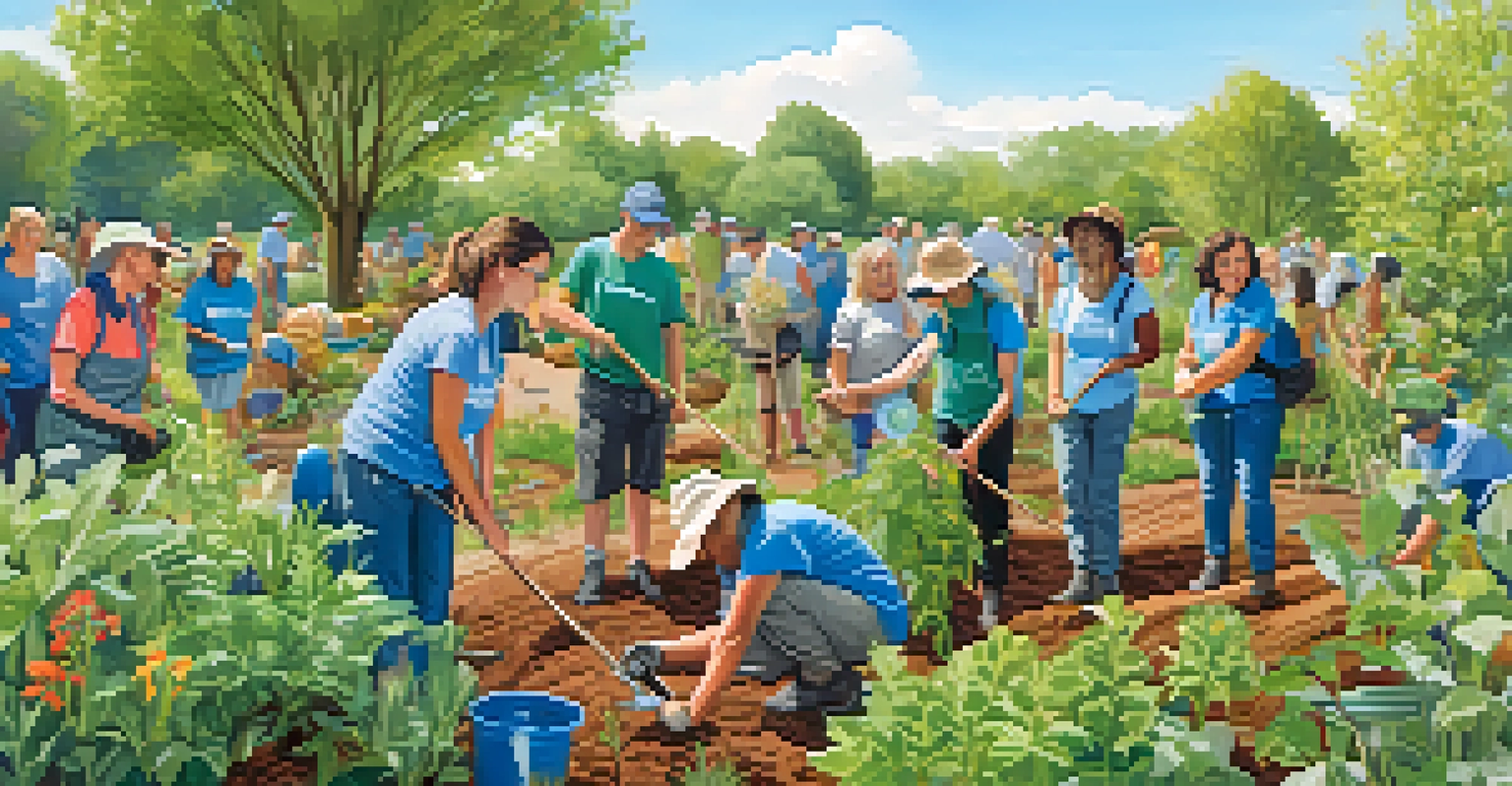Evaluating Washington State's Biodiversity Conservation Efforts

Understanding Biodiversity in Washington State
Biodiversity refers to the variety of life found in a particular habitat or ecosystem. In Washington State, this diversity is incredibly rich, encompassing numerous species of plants, animals, and microorganisms. The unique geography, including mountains, forests, and coastlines, contributes to this vast array of life. Understanding this biodiversity is crucial for implementing effective conservation strategies that protect the ecosystems we depend on.
Biodiversity is the greatest treasure we have, and we need to care for it.
For instance, the Olympic Peninsula houses species that are not found anywhere else in the continental U.S. This distinctiveness highlights the importance of conservation efforts tailored to specific regions. By recognizing which species are at risk, conservationists can prioritize their efforts more effectively and allocate resources where they are needed most.
Moreover, biodiversity is not just about the number of species; it also involves the variety of ecosystems. Maintaining diverse habitats ensures that ecosystems remain resilient in the face of climate change and other environmental pressures. This resilience is essential for sustaining both wildlife and human communities.
Current Conservation Strategies in Washington
Washington State employs a range of strategies to conserve its biodiversity, from habitat protection to species recovery programs. One example is the Washington Department of Fish and Wildlife's efforts to recover endangered species, such as the gray wolf and the northern spotted owl. These initiatives often involve collaboration with local communities, stakeholders, and scientists to ensure a holistic approach to conservation.

In addition to species recovery, protecting critical habitats is vital. This includes the preservation of wetlands, forests, and marine environments, which are crucial for many species' survival. Conservation easements and land use planning are tools used to safeguard these habitats, often supported by local governments and non-profit organizations.
Importance of Biodiversity
Biodiversity in Washington State is critical for ecosystem resilience and effective conservation strategies.
Public awareness and education are also key components of Washington's conservation strategy. By engaging the community through workshops, volunteer programs, and outreach, the state fosters a culture of stewardship that encourages residents to take an active role in protecting their natural surroundings.
Assessing the Effectiveness of Current Efforts
Evaluating the success of conservation efforts is essential for understanding their impact on biodiversity. This can be achieved through monitoring species populations and habitat conditions over time. For example, scientists might track the population growth of a particular species after habitat restoration projects to see if those efforts yield positive results.
The future will be shaped by how we care for our planet today.
Another method of assessment involves public engagement and feedback. Surveys and community involvement can provide insights into how residents perceive conservation initiatives and their willingness to participate. This feedback loop helps refine strategies and ensures that they resonate with the community's values and needs.
However, challenges remain in measuring success accurately. Factors like climate change, invasive species, and urban development can complicate assessments, making it difficult to attribute changes in biodiversity solely to conservation efforts. Continuous adaptation and learning from both successes and setbacks are crucial for long-term effectiveness.
Challenges Facing Biodiversity Conservation
Despite ongoing efforts, Washington State faces significant challenges in preserving its biodiversity. Urbanization, for instance, poses a major threat as cities expand and natural habitats are altered or destroyed. This loss of habitat can lead to declining species populations and even extinction.
Climate change is another pressing concern, altering weather patterns and disrupting ecosystems. For example, rising temperatures and changing precipitation patterns can affect the availability of food and habitat for various species, making it difficult for them to adapt. Conservationists must consider these factors when developing their strategies.
Community Engagement Matters
Local involvement in conservation initiatives fosters awareness and a sense of ownership over natural resources.
Moreover, invasive species can outcompete native flora and fauna, further complicating conservation efforts. Addressing these challenges requires innovative solutions, collaboration among various stakeholders, and a commitment to ongoing research and monitoring.
Community Involvement in Conservation Efforts
Community involvement plays a vital role in the success of conservation initiatives in Washington State. Engaging local residents not only helps raise awareness but also fosters a sense of ownership over natural resources. Programs that encourage citizen science, such as bird counts or wildlife monitoring, allow individuals to contribute directly to conservation efforts.
Additionally, local conservation groups and non-profits often rely on volunteers to help with restoration projects. For example, planting native species or removing invasive plants can significantly impact local ecosystems. These hands-on experiences not only benefit biodiversity but also educate participants about the importance of conservation.
Moreover, community forums and discussions can help shape conservation policies by incorporating local knowledge and perspectives. This collaboration ensures that the strategies implemented are culturally relevant and have the community's support, ultimately leading to more sustainable outcomes.
The Role of Policy in Biodiversity Conservation
Effective policy is crucial for guiding biodiversity conservation efforts in Washington State. Laws and regulations at both the state and federal levels play a significant role in protecting endangered species and their habitats. For instance, the Endangered Species Act provides a framework for the recovery of threatened species, ensuring that they receive the necessary protections.
In Washington, state policies also promote sustainable land use practices that consider biodiversity. Zoning laws and land management guidelines can help balance development needs with conservation goals, preventing habitat loss while allowing communities to grow. This balance is essential for maintaining both human and ecological health.
Policy Guides Conservation Efforts
Effective policies are essential for protecting endangered species and balancing development with environmental conservation.
Furthermore, policymakers often collaborate with scientists, conservationists, and local communities to develop comprehensive conservation plans. This collaborative approach ensures that diverse perspectives are considered, resulting in more effective and inclusive policies that address the unique challenges facing Washington's ecosystems.
Future Directions for Biodiversity Conservation
Looking ahead, Washington State's biodiversity conservation efforts will need to adapt to emerging challenges and opportunities. This may involve embracing new technologies, such as remote sensing and data analytics, to monitor ecosystems more effectively. These tools can provide valuable insights into species distribution and habitat conditions, informing conservation strategies.
Additionally, as climate change continues to impact ecosystems, conservation efforts must incorporate climate resilience into their planning. This means identifying areas that can serve as climate refugia for vulnerable species and prioritizing their protection. Flexibility and innovation will be key in navigating these uncertainties.

Ultimately, fostering a culture of conservation within communities will be essential for the future. By inspiring individuals to value and protect biodiversity, Washington State can build a strong foundation for ongoing conservation efforts that ensure a thriving natural environment for generations to come.